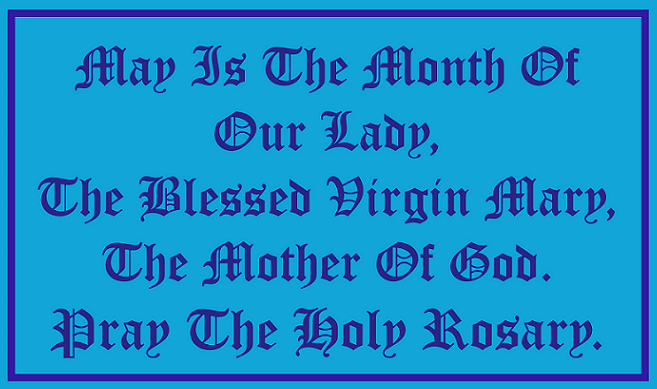The Blessed Virgin Mary
is Crowned in Heaven by her Beloved Son.
Illustration: AD MOIOREM DEI GLORIAM
The complete Gregorian Chant Rosary.
Here are the Latin/English translations of the Prayers.
Available on YouTube at
English: The Crowning of The Virgin Mary
in Heaven by The Holy Trinity.
Español: Coronación de la Virgen.
Deutsch: Die Krönung Marias.
Artist: Diego Velázquez (1599–1660).
Date: Circa 1645.
Current location: Prado Museum, Madrid, Spain.
Source/Photographer: https://www.museodelprado.
(Wikimedia Commons)
The complete Gregorian Chant Rosary.
Here are the Latin/English translations of the Prayers.
Available on YouTube at

The complete Gregorian Chant Rosary.
Here are the Latin/English translations of the Prayers.
Available on YouTube at
“The Litany of Loreto”.
Available on YouTube at
The following Text is from PRECES-LATINAE.ORG
“Litaniæ Lauretanæ”.
“Litany of Loreto”.
The Litany of Loreto is used to honour Mary, The Mother of God. The Litany recalls Mary's unique role in our salvation history as The Mother of Our Saviour and invokes various Titles for her as a way of honouring her and reminding us of the role she has played.
The Litany owes many of its Praises to The Greek Akathist Hymn, which was first translated into Latin in Venice around 800 A.D. The other Titles and Praises addressed to Mary are found extensively in the writings of The Early-Church Fathers of the first six Centuries A.D.
Over time, a number of Titles for Our Lady were removed and added to The Litany. Originally, The Litany had fifteen additional Titles, such as Our Lady of Humility, Mother of Mercy, Temple of The Spirit, Gate of Redemption, and Queen of Disciples.
Recent history has seen the addition of five Titles. The last four Titles of The Litany, which refer to The Immaculate Conception, The Assumption, The Rosary, and Mary as The Queen of Peace, are of recent origin. The latest addition, Mother of The Church, was added by His Holiness Pope Saint John Paul II.
Most likely, The Litany was composed in or around Paris between the years 1150 and 1200. It gets its name [Editor: “The Litany of Loreto”] from the Italian shrine (Loreto) where it was adopted in 1558. Pope Sixtus V approved its use in public Worship in 1587.
Most likely, The Litany was composed in or around Paris between the years 1150 and 1200. It gets its name [Editor: “The Litany of Loreto”] from the Italian shrine (Loreto) where it was adopted in 1558. Pope Sixtus V approved its use in public Worship in 1587.






No comments:
Post a Comment